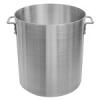We do micro testing on spices using rapid total aerobic and yeast and mould rapid plates. Once a year we do an annual proficiency test to compare our results with an external laboratory. Their method is different therefore the results are not the same. They used agar plates and the numbers aren't the same. Our result was 10,000 (3 times dilution) and theirs was 540.
Can anyone elaborate on this? How can I compare the results?
Thanks in advance
Sent from my Pixel 4 using Tapatalk
- Home
- Sponsors
- Forums
- Members ˅
- Resources ˅
- Files
- FAQ ˅
- Jobs
-
Webinars ˅
- Upcoming Food Safety Fridays
- Recorded Food Safety Fridays
- Upcoming Hot Topics from Sponsors
- Recorded Hot Topics from Sponsors
- Food Safety Live 2013
- Food Safety Live 2014
- Food Safety Live 2015
- Food Safety Live 2016
- Food Safety Live 2017
- Food Safety Live 2018
- Food Safety Live 2019
- Food Safety Live 2020
- Food Safety Live 2021
- Training ˅
- Links
- Store ˅
- More

















